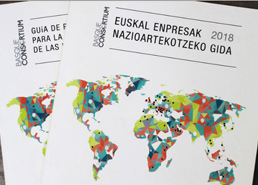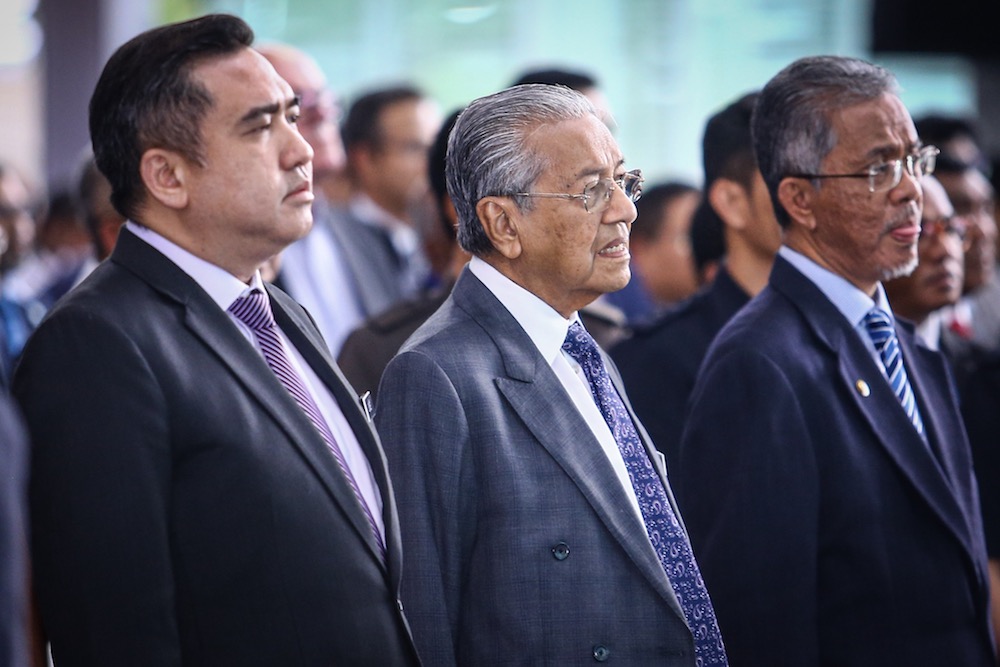Launching the National Transport Policy 2019-2030 here today, he said the government is in the position to do so with strategic planning as well as cooperation and commitment from industry players, the people and others.
Prime Minister Tun Dr Mahathir Mohamad, Transport Minister Anthony Loke and his deputy Datuk Kamarudin Jaffar attend the launch of the National Transport Policy 2019-2030 at KL Sentral in Kuala Lumpur October 17, 2019.
Malaysians can count on the government to provide a sustainable transport system that will contribute to the country’s economic growth and ensure the people’s well-being, said Prime Minister Tun Dr Mahathir Mohamad. Launching the National Transport Policy 2019-2030 here today, he said the government is in the position to do so with strategic planning as well as cooperation and commitment from industry players, the people and others.
“This policy will ensure that Malaysia continues to remain as a business-friendly nation, meets the needs of Industry and is able to compete at the international level in the transport industry,” said Dr Mahathir. At the event held at KL Sentral, Dr Mahathir emphasised that the NTP2019-2030 was in line with the Shared Prosperity Vision 2021-2030, which stresses on equitability of outcomes. “It (NTP 2019-2030) also stresses on inclusivity, that is involvement of both the people and industry players in the transport sector, specifically public transport,” said the prime minister. According to him, among the main things that needed to be given attention and will be addressed through the policy are the latest technological advancements, changes in trends in people’s mobility and development of e-commerce.
“Technological advancements including in e-commerce must be harnessed fully by all including transport industry players and entrepreneurs in the transportation field to reap economic benefits,” he said. Dr Mahathir added that the government would make efforts to increase public transportation services including through rail projects in cities to meet the needs of urban residents. Malaysia, he said, chose not to limit the number of private vehicles and this resulted in urban and rural roads having to be built all the time.
“In order to reduce congestion due to the increased number, the government would encourage the use of public transport including providing the dual-track electric rail,” he said. He observed that the use of the railway was still low and many heavy and large vehicles still using the roads which would lead to accidents. He said it would be better if larger and heavier freight used the existing rail system. “If the existing system is inadequate, the government will endeavour to increase the facilities from the revenue that will increase if the rail system is used more for heavier and bigger cargo,” said Dr Mahathir. Dr Mahathir explained: “A study would be undertaken so that our rail system is fully utilised. The private sector is invited to make suggestions and invest as well as rent the existing tracks. ”He added that the government would upgrade the existing railway network besides developing new railway networks such as the Bukit Kayu Hitam railway branch and the “Landasan Pintasan Serendah-Pelabuhan Klang”.
The prime minister wanted industry players in the air and sea sectors to benefit from the higher demand by improving their respective volume to fulfil the current needs, thus giving benefits to the national economy. Among the actions planned in the National Development Policy was to create guidelines on the construction of infrastructure for transportation including rail routes to control the impact of construction on national environment. Also given attention was the practice of Transit-Oriented Development or TOD which encouraged development in areas that had transport facilities such as public transport terminals so that the people could easily access the terminals. Dr Mahathir also wanted facilities at stations and land transport terminals as well as the sea and air terminals to suit the special needs of the senior citizens. Special space and lanes at the terminals and in public transport vehicles should also be provided for the benefit of people with special needs, he added.
+info: https://www.malaymail.com



